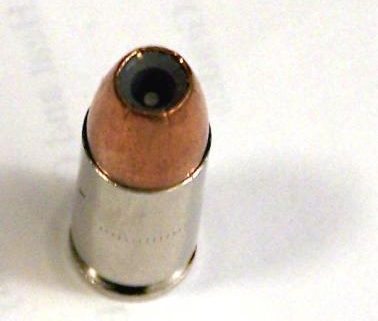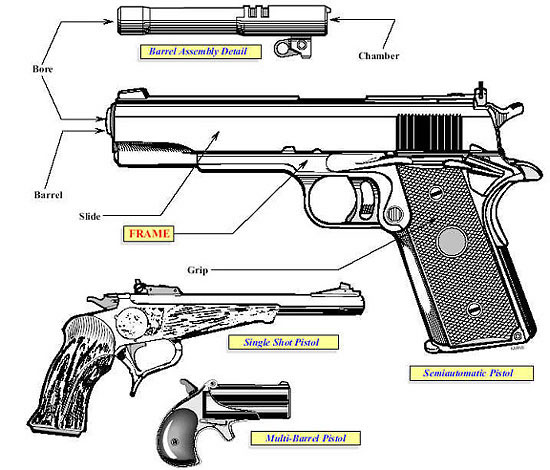Officer Glen Ciano, 45
Suffolk County New York Police Department
Officer Glen Ciano was killed on February, 22, 2009, when his patrol car was struck by a drunk driver. The collision forced Officer Ciano’s car off the highway where it struck a telephone pole and immediately burst into flames. The twenty-two year veteran leaves behind a wife and two children.
* Thanks to ODMP
Photo by Stephen D. Rogers
ANDREW MCALEER is the author of The 101 Habits of Highly Successful Novelists and the co-author of the number 1 best-selling, Mystery Writing in a Nutshell. Mr. McAleer is also the author of three novels including the critically-acclaimed, Double Endorsement and Bait and Switch. A prosecutor with the Massachusetts Department of Correction, Mr. McAleer is an adjunct professor at Boston College and a recipient of the Sherlock Holmes Revere Bowl Award. He serves as a specialist in the Army National Guard. Visit Mr. McAleer at www.Crimestalkers.com
THE K-9 CONNECTION
When it comes to the fight against crime most people think that once a defendant is convicted and incarcerated that fight is over. This is not the case. Prison officials are constantly strategizing ways to prevent convicted criminals from plying their trade from behind bars. Fortunately, prison officials are not alone in their fight – cell phone dogs have joined team!
Believe it or not, one of the latest weapons used by inmates is the cell phone. The 2008 December issue of Corrections Forum reports that “Wireless phones are quickly becoming one of the most powerful forms of contraband within correctional facilities. They are used for criminal activities from fraudulent purchasing to planning murders.” Forum adds that in January 2008 a woman set testify against a career criminal was gunned down in the streets of Philadelphia and that the hit was ordered by a contraband cell phone.
In October of 2008, with the use of a smuggled cell phone, an inmate on death row harassed a Texas state senator by calling him repeatedly and threatening his daughters. In another example, the key witness in a Baltimore murder trial was shot and killed in front of his home in South Carolina from a hit ordered by a contraband cell phone. Former police officer and crime scene investigator Harlen Lambert, now the principal trainer for All States K-9 Detection-along with his detector dogs-is helping to put an end to this dangerous contraband.
In September 2007 Lambert began training dogs to detect cell phones. What the dogs actually do is sniff out the scent of the cell phone and not the cell phone itself. The results have been amazing. In one prison Lambert hid 26 cell phones around the facility and within 30 minutes the dogs found all 26 phones. They were hidden in various places like peanut butter jars, Yellow Pages books, or wrapped in plastic and submerged in the back of a toilet tank. The dogs can even find cell phone components. As a result, inmates who disassemble phones and try to hide its parts won’t outfox the dogs. Lambert says that if a dog already has some detection training, then he can develop a functioning detector dog in 21 consecutive days. (Forum).
The types of dogs trained by All States vary. Labs, German Shepherds, and Malinos. Major Peter Anderson, K-9 trainer for the Maryland Department of Public Safety and Correctional Services says that he generally works with Labs, Golden Retrievers, and Springer Spaniels. Regardless of the breed, cell phone dogs must be able to function in the high stress prison environment. With proper care and training these amazing animals can and do. Proving once again that man’s best friend is always ready to answer the call.
*Andy will be fighting crime during the day today, but he’ll be around in the evening hours to answer your questions.
Books by Andrew McAleer
Medical examiners sometimes get a bum rap. Their life is not always about plucking the innards from every Tom, Dick, and Harry they meet. M.E.s and coroners play a huge role in solving homicides, and many times they alone do the crime-solving. They’re also responsible for protecting the most valuable piece of evidence in a murder case – the body. Here are a few items used in that process:
Tamper-proof body bag seal (What goes in a body bag, stays in a body bag).
Toe tag (Don’t want to mix up the bodies. Sometimes it’s quite crowded in those cold rooms).
Big Girtha (extra large) body bag w/10 handles and 2 zippers (For those victims who never made that call to Jenny Craig).
Tyvek boot covers – w/PVC bottoms for traction
Evidence drying cabinet
And for that someone special who has everything…
Dead Men Talk (on front) CSIs Listen (on back) T-shirt
Sally Slugger skeleton
Homer Runner skeleton
Crime scene bumper sticker
Glassware
Hats
And for undercover work…
Crime scene boxer shorts
Facts about Tasers
1. Tasers do not intefere with pacemakers
2. Tasers work in all seasons. There’s no truth about weather interfering with Taser performance.
3. Approximately 200 people have died after being shot with police Tasers.
4. Can you be shot with a Taser for eluding police on a lawnmower? Well, ask Steve…
So, is what you just witnessed the same as what the sergeant in the next video describes?
And just for fun (Please don’t drink or eat while listening to this audio. You could damage your computer. You’ll see what I mean)…
Officer John Pawlowski, 25
Philadelphia Police Department
On February 13, 2009, Officer Pawlowski was shot and killed by an armed suspect. The officer had been attempting to quell a dispute between a cab driver and his passenger when the passenger fired a gun from inside his coat pocket. Officer Pawlowski was shot twice in the chest. The officer’s bullet resistant vest stopped the first bullet, but the fatal round struck him just above the vest. Officer Pawlowski’s brother is also an officer with the Philadelphia Police Department. His father retired from the same agency. The officer leaves behind his expectant wife.
Officer Richard Matthews, 28
Wilmington North Carolina Police Department
Officer Richard Matthew died on February 18, 2009, as result of injuries he received in an automobile accident on the same day.
Officer James Fredrick (Freddie) Norman, 45
Cobb County Georgia Police department
Officer Freddy Norman died on February 14, 2009, from injuries he received in a collision with a drunk driver 21 years earlier. The accident left Officer Norman as a quadriplegic, but the drunk driver was sentenced to serve only 6 months in a halfway house. Officer Norman leaves behind his wife and three children.
Captain Scott Bierwiler, 42
Hernando county Florida Sheriffs Office
Captain Scott Bierwiler was killed on February 19, 2009, in a head-on automobile accident with a teenage driver. Captain Bierlwiler leaves behind his wife, three children, his mother, brother and a sister.
Matching a bullet to a particular firearm used to be a painstaking process. Well, that’s no longer true with software such as Forensic Technology’s IBIS BrassTrax. Now analysts have the capability to examine bullets using both 2D and 3D technology. The software even allows for multiple views of the same object.
Side of bullet fired through a Glock. Shows the markings left in the lead from lands inside the pistol’s barrel.
View looking into a pistol barrel. The raised portions of the spiraled markings are called lands. The slots are called (duh) grooves. The open portion of the barrel is called a bore.
Primer of bullet (flat end of the round that’s struck by the firing pin). This round was fired from a Glock.
Using the 3D computer technology to match two rounds. These are two separate primers.
Angled view of primer.
Two bullets are compared for similarities. The markings look the same, and the line comparisons at the bottom (red line is the test bullet; green is the reference bullet) confirm it.
There’s a question that always comes up during my workshops and seminars. I get the question in emails. I see it in online discussion groups. Well, it reared its head again this week in another online loop. The question is – “When does the FBI come into town, use their authority, and take over a case from the local police?” Short answer – NEVER, unless they’re invited by local law enforcement, or, unless it’s a case they initiated, like a big art theft from your local museum. They don’t even investigate all bank robberies.
Official FBI training manual
The FBI is not some supreme law enforcement entity that local cops bow down to. In fact, I dare say that the majority of FBI special agents have never arrested a single bad guy. They certainly don’t patrol the streets. That’s not what they do, that’s not what they’re trained to do, and that’s not what they’re expected to do. They do not enforce local law. The crimes investigated by federal agents are entirely different than those investigated by your local police; therefore, an agent’s training is different. Here’s a list of most crimes investigated by the FBI:
Terrorism
Weapons of mass destruction
Espionage
Online Crimes, such as fraud and predators
Public corruption
Election fraud
Hate crimes
Civil rights
Human traffficking
Organized crime
Sports bribery
White collar crime
Crimes against children
Cruise ship crime
Art theft
Cargo theft
Money laundering
Violent gangs
Insurance fraud
Local cops are charged with keeping you safe. They patrol the streets and investigate crimes. They’re charged with enforcing all laws of your community and state. They work burglaries, homicides, rapes, robberies, assaults, and drug crimes. They work in the schools, educating children and keeping them safe while you’re at work. They comfort the elderly when they call late at night. They pull people from burning automobiles and homes. They perform CPR on drug overdose victims.
So, you can see for yourself there are few similarities between FBI agents and local police officers. FBI agents are highly skilled law enforcement officers, and they’re good at what they do. So are local officers. I’ve worked with federal officers on many cases, and the experience was pleasant. They were fantastic people, very sharp, and even funny. I still have friends who are federal agents. I talk to some on a daily basis – several times a day. But the two agencies are not the same. Not even close. It’s like comparing apples to oranges, night and day, dogs and cats…patrol officers to agents.
Question: Was Elvis really an undercover FBI agent?
Have you ever really watched when someone is firing a semi-automatic pistol? What happens to the brass? How far is the brass ejected? What does the recoil do the wrists and arms? What does the slide look like when it kicks back
Here’s a slow motion video that will answer all those questions. Notice the movement of the flesh on the shooter’s right forearm.
Where’s the worst place to stand when someone’s firing a shotgun? In front of the barrel, right? Well, here’s what is looks like to be in that horrifying position.
* Notice the ejected shell. And, if you follow the shot (round pieces of lead similar to bullets) as they leave the barrel you’ll also see a round, white wadding. The wadding is inserted into the shotgun shell as a seal that prevents gas from passing through the shot, instead of propelling it forward.
Did you know:
– A semi-auto uses the force from its own recoil to eject old casings and to load a fresh round into the chamber?
– Shotguns are also referred to as scatter guns?
– The Glock 17 was first introduced in 1982?
– Shotgun barrels are normally smooth bore, meaning there are no lands and grooves like those in handguns and rifles?
– Shotguns with barrels less than 18 inches long are considered “sawed-off” shotguns, and it’s illegal to possess one in the United States without special approval from the ATF?
* * *
Here’s an update on the Michael Phelps bong incident. Remember what I said in my earlier post about this? I said there wasn’t enough evidence to try Phelps for possession of marijuana – no blood test results, no confession, etc. Photographs alone are not sufficient evidence. Well, I’ll say this now – I told you so! Nah, nah, nah, nah, nah…
(CNN) — Olympic swimming champion Michael Phelps will not face criminal charges in connection with a November party at which he was photographed using a bong, a South Carolina sheriff said Monday.
“We do not believe we have enough evidence to prosecute anyone who was at the party in Columbia, South Carolina,” Richland County Sheriff Leon Lott told reporters, adding that authorities are ending their investigation into Phelps.
“We had a photo, and we had him saying he was sorry for his inappropriate behavior,” Lott said. “That behavior could have been going to a party. … He never said, ‘I smoked marijuana.’ He never confessed to that. We didn’t have physical evidence. We didn’t have enough where we could go arrest him.”
Countdown to 2024 KILLER CON
Writers’ Police Academy
The 2024 Writers’ Police Academy is a special event called Killer Con, which is designed to help writers create stunning realism in their work, Killer Con focuses on the intricate details surrounding the crime of murder and subsequent investigations.
Visit The WPA website to register!
*The Writers’ Police Academy (WPA) is held every year and offers an exciting and heart-pounding interactive and educational hands-on experience for writers to enhance their understanding of all aspects of law enforcement, firefighting, EMS, and forensics.
Get to Know Lee Lofland
Lee Lofland is a nationally acclaimed expert on police procedure and crime-scene investigation, and is a popular conference, workshop, and motivational speaker.
Lee has consulted for many bestselling authors, television and film writers, and for online magazines. Lee has appeared as an expert on national television, BBC Television, and radio shows.
Lee is the host and founder of the Writers’ Police Academy, an exciting, one-of-a-kind, hands-on event where writers, readers, and fans learn and train at an actual police academy.
To schedule Lee for your event, contact him at lofland32@msn.com



























